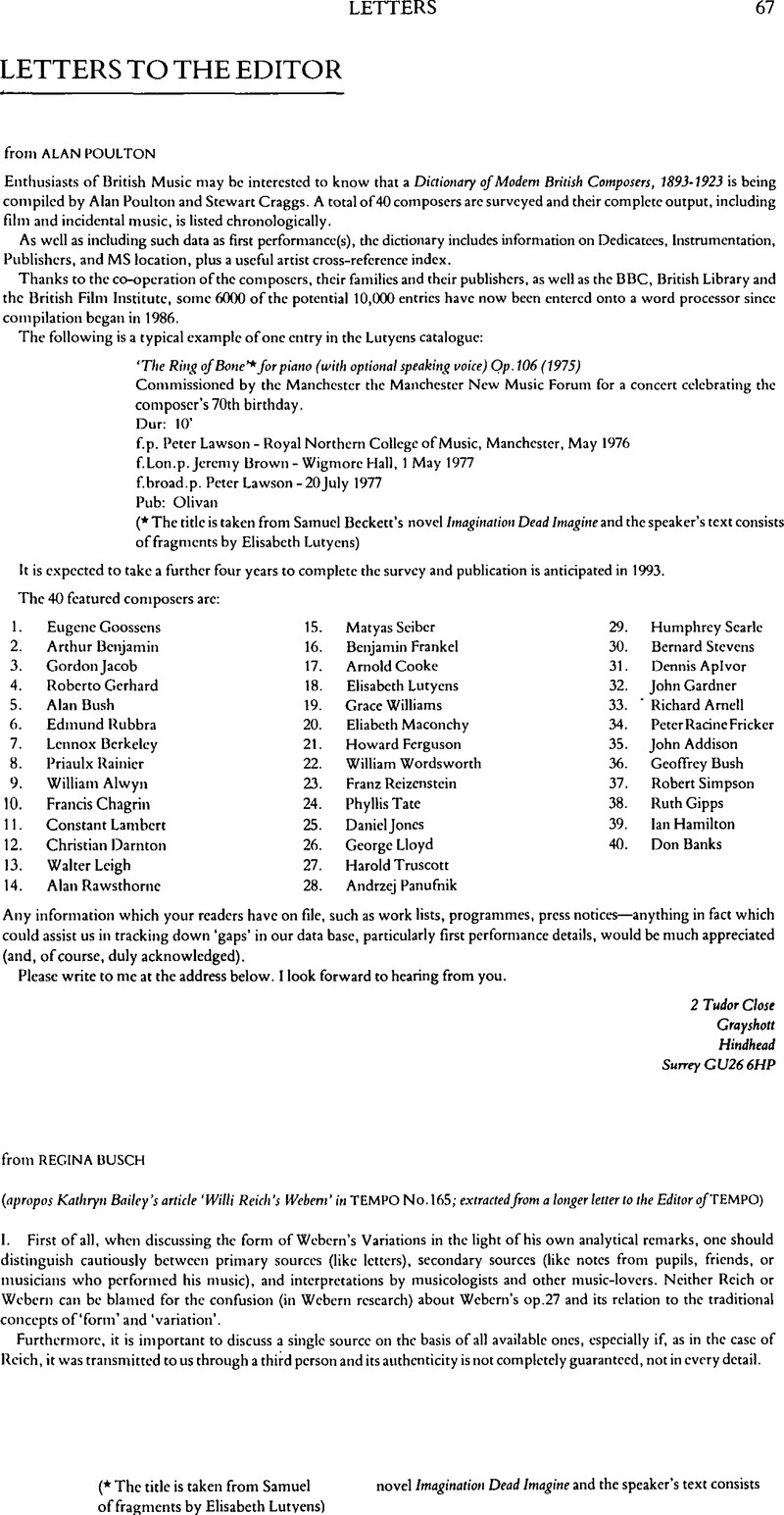No CrossRef data available.
Article contents
Letters to the Editors
Published online by Cambridge University Press: 04 February 2010
Abstract

- Type
- Letters to the Editor
- Information
- Copyright
- Copyright © Cambridge University Press 1988
References
* Cf. Busch's, Rcgina article ‘Taktgruppen in Webern's Konzert op.24’, in Musica, 11–12 1986, pp. 532–537.(Ed.)Google Scholar
† ‘I am sending you, by the same post, my Variations … it is divided into self-contained movements (three). Also I make the theme by no means expressively prominent (at the head, so to speak). I almost wish that it could remain unknown as such … Nonetheless, it had better remain as it is, at the rear. (It is—naturally I can disclose it to you—the first 11 bars of the 3rd movement.) … The first movement is quasi an Andante, the second a Scherzo (It is a 2-voice ‘endless’ canon, endless within its two parts, but also with regard to these two together; one must play it in an almost aimiable way, viz. try, despite the fast tempo, nevertheless to bring through the espressivo of the structure (likewise the ‘cantabile’). The third movement is indeed a variation-sequence, in its construction. (The penultimate variation stands out in the spirit of a restless melody; the character of the others and of the Theme itself is fairly difficult to misunderstand.)’
‡ Especially in the Muska article on op. 24 previously cited, and in ‘Wie Berg dcr richtige Rcihe fand’ in Musik-Konzepte, Webern, Sonderband Anton II (Munich, 1987). (Ed.)Google Scholar




